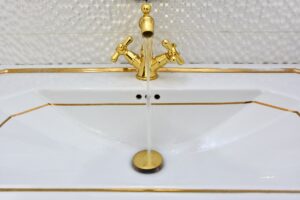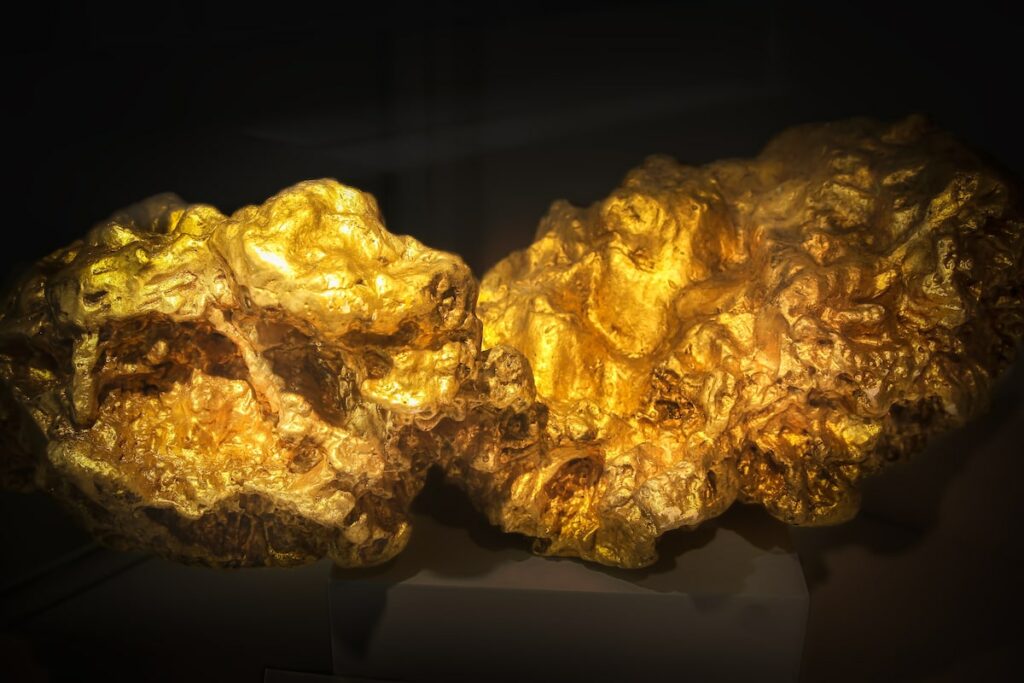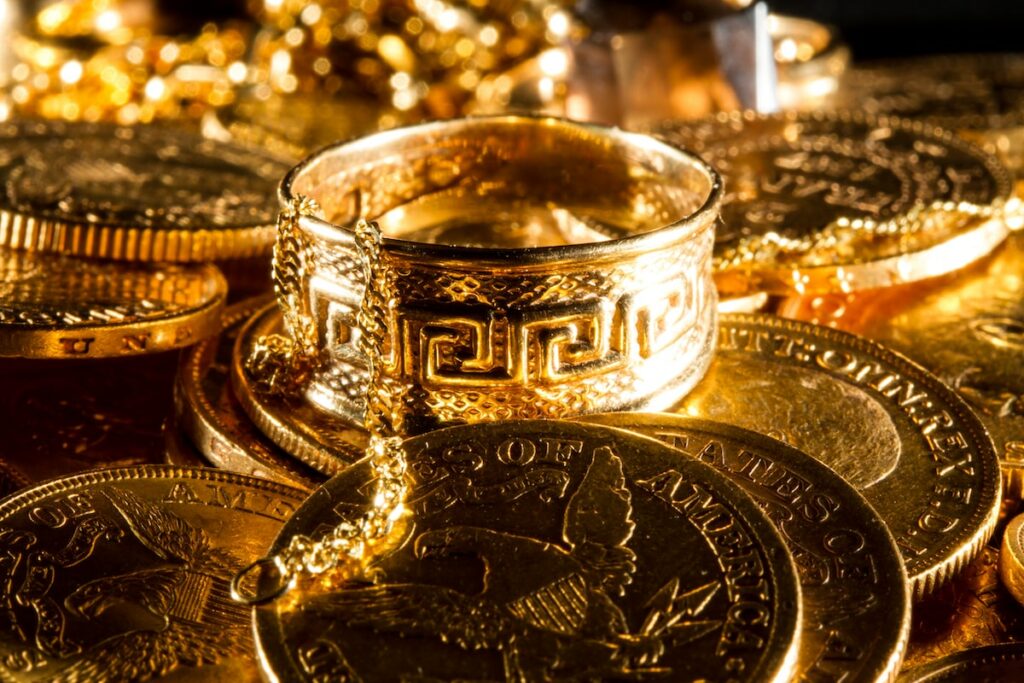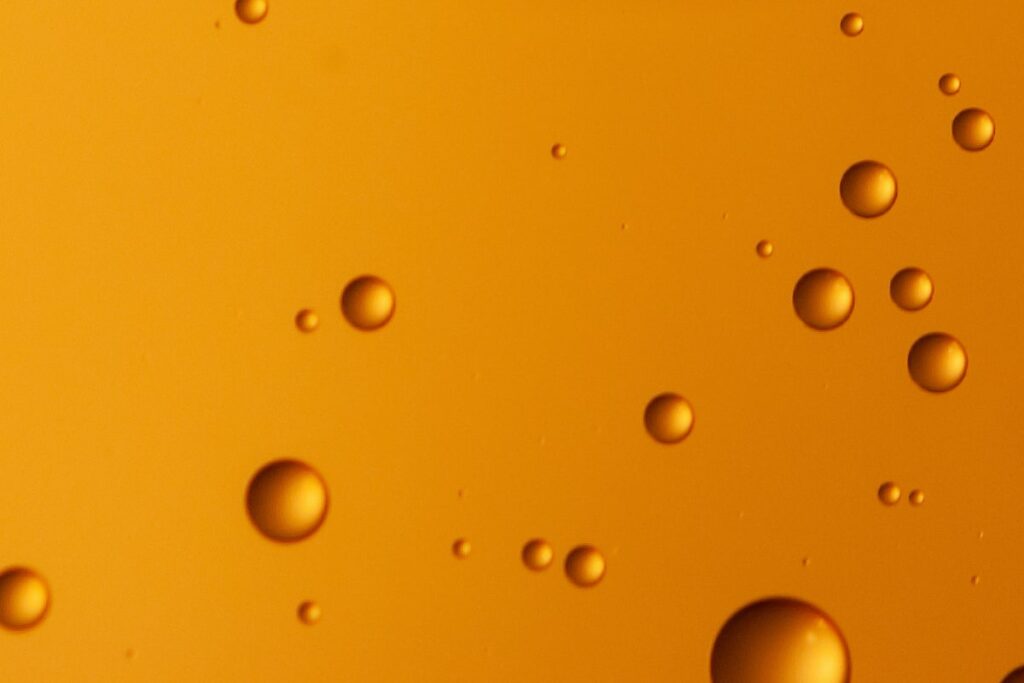Gold, the illustrious metal revered for its beauty and value throughout history, has always possessed an air of enigma.
Its lustrous appearance and resistance to tarnishing have earned it a reputation as the epitome of durability.
Yet, lurking beneath this veneer of invincibility lies a lingering question: Does gold rust in water?
Gold does not rust in water. It is highly resistant to corrosion and does not undergo the oxidation process that leads to rust formation.
Join us as we unravel the mysteries within the aqueous realm, seeking to understand the true nature of gold’s reaction to the element that sustains life.
Gold’s Resistance to Oxidation: Exploring the Science Behind its Immunity
Gold’s resistance to oxidation is a remarkable characteristic that sets it apart from many other metals.
While numerous metals succumb to the detrimental effects of oxidation, resulting in rust and corrosion, gold remains virtually unscathed in moisture.
To understand the science behind gold’s immunity, we must investigate its atomic structure and electron configuration.
At the atomic level, gold possesses a unique arrangement of electrons in its outermost shell.
Gold exhibits exceptional stability, unlike metals that readily donate or accept electrons due to its full and tightly bound electron configuration.
This tightly bound configuration makes it difficult for oxygen molecules from water or air to interact with the gold atoms and initiate the oxidation process.
As a result, gold remains untarnished and retains its alluring shine even when exposed to moisture for extended periods.
Moreover, gold’s resistance to oxidation can be attributed to its noble or inert nature.
The term “noble” refers to metals that exhibit low reactivity and are highly corrosion-resistant.
Gold and other precious metals like platinum and silver fall into this category.
The noble behavior of gold arises from its electronic structure, which involves a filled d-band.
This stable configuration creates a strong electrostatic interaction between the gold atoms, making it difficult for external elements, including oxygen and water molecules, to initiate chemical reactions that would lead to rust or tarnish.
Consequently, gold’s resistance to oxidation makes it a sought-after material for various applications, from jewelry and artwork to industrial and electronic components.
In the quest to understand the exceptional resistance of gold to oxidation, scientists continue to delve into its intricate atomic structure and deeper into the secrets of its immunity.
The exploration of gold’s resistance to corrosion sheds light on its unique properties and offers valuable insights for developing new materials with enhanced durability and longevity.
The Chemistry of Gold and Water: Unveiling the Intricate Relationship
The chemistry of gold and water unveils a fascinating and intricate relationship between these two entities.
Despite gold’s reputation for being resistant to rust and corrosion, its interaction with water is not devoid of chemical phenomena.
By exploring the underlying chemistry, we can better understand the complex dynamics.
At a molecular level, water consists of two hydrogen atoms bonded to one oxygen atom, forming the familiar H2O structure.
Gold, on the other hand, is a noble metal with a stable atomic configuration. When gold comes into contact with water, a few noteworthy interactions occur.
The oxygen atoms in water molecules can weakly bond with the gold surface, leading to the formation of what is known as an adsorbed water layer.
This layer forms due to the attractive forces between the partially negatively charged oxygen atoms in water and the positively charged gold atoms.
Additionally, gold can undergo a process called dissolution when immersed in water.
Under certain conditions, water molecules can coordinate with gold ions, forming solvated gold complexes.
These complexes consist of gold ions surrounded by water molecules, stabilizing the gold in a dispersed form within the solution.
Various factors, including temperature, pH, and other substances in the water, influence the dissolution process.
Understanding the intricate relationship between gold and water at a molecular level is not only of scientific interest but also holds practical significance.
It has implications in fields such as metallurgy, mining, and environmental science, where the behavior of gold in water systems can impact its extraction, transport, and environmental fate.
By unraveling the chemistry of gold and water, we can uncover new insights and potentially develop innovative applications in various industries.
Tarnish vs. Rust: Debunking Misconceptions about Gold’s Reaction to Moisture
Gold, known for its enduring beauty and perceived invulnerability, often leads to misconceptions about its moisture reaction.
It is crucial to differentiate between tarnish and rust, as these terms are often used interchangeably but refer to distinct processes.
Tarnish, commonly observed on metals like silver, occurs when the surface undergoes chemical reactions with environmental elements, leading to a dull or discolored appearance.
On the other hand, rust specifically refers to the oxidation of iron or iron-based alloys, resulting in characteristic reddish-brown corrosion products.
Contrary to popular belief, gold does not rust. Its unique properties render it highly resistant to oxidation, preserving its luster even in moisture.
Unlike iron, gold does not readily react with oxygen to form iron oxide (rust) when exposed to water or air.
Instead, gold’s electrons are tightly bound, providing it with exceptional stability and preventing oxidation from occurring.
While gold can form a surface layer of oxide under certain conditions, this layer is extremely thin and does not propagate further, effectively protecting the underlying gold from corrosion.
By debunking these misconceptions, we can better understand gold’s behavior in the presence of moisture.
The resistance of gold to rust and its ability to maintain its intrinsic beauty make it a prized material in various industries, from jewelry and art to electronics and dentistry.
Appreciating the distinction between tarnish and rust is crucial to dispel myths and unraveling the true nature of gold’s reaction to moisture, cementing its position as a symbol of durability and timeless elegance.
Factors Influencing Gold’s Reactivity to Water: Unraveling the Mysteries
The reactivity of gold to water may seem straightforward initially, with gold being highly corrosion-resistant.
However, intriguing factors can influence gold’s behavior and reactivity when in contact with water.
Unraveling these mysteries can illuminate the intricate dynamics between gold and water molecules.
One crucial factor is the presence of impurities or foreign substances in water. Water can contain dissolved gases, such as oxygen and carbon dioxide, as well as various ions and contaminants.
These impurities can impact gold’s reactivity by facilitating or hindering certain chemical reactions.
For instance, dissolved oxygen can form a thin oxide layer on the gold surface, albeit extremely slowly.
Temperature also plays a role in gold’s reactivity to water.
Higher temperatures can increase the rate of reactions, including the dissolution of gold ions into the water.
However, gold’s reactivity to water remains extremely low under typical ambient conditions, emphasizing its corrosion resistance.
Another crucial factor is the surface condition of the gold.
Gold surfaces can undergo modifications due to various factors such as physical abrasion, exposure to chemicals, or even the presence of a protective coating.
These modifications can affect the reactivity of gold with water, either by enhancing or diminishing its interaction with water molecules.
The pH of the water also influences gold’s reactivity.
While gold is generally corrosion-resistant in neutral water, extreme pH conditions, such as highly acidic or alkaline solutions, can affect gold’s stability and initiate chemical reactions that alter its surface.
We can deepen our understanding of gold’s reactivity to water by unraveling these factors’ mysteries.
While gold’s resistance to corrosion remains a prominent characteristic, these additional factors contribute to the complex relationship between gold and water.
Exploring these intricacies paves the way for further advancements in gold-related applications and helps us appreciate the exceptional stability of this precious metal.




